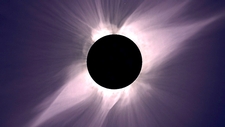Light Energy

TEKS Objective
The student will investigate the effects on an object by increasing or decreasing amounts of light, heat, and sound energy such as how the color of an object appears different in dimmer light or how heat melts butter.
Essential Understanding
The student knows that forces cause change and energy exists in many forms.
Science Background
Energy Story, Solar Energy: Energy Quest (website) - Students learn about the light and heat energy produced by the sun, and about the important roles this energy plays in our daily lives.
Energy Story, Solar Energy
Energy Quest, www.energyquest.ca.gov
The Science of Light: The Annenberg Foundation (website) – The effects of light including color, shadows and how light moves are explored and discussed. Online simulation labs are available to deepen your understanding about light energy.
The Science of Light
The Annenberg Foundation, www.learner.org
Signature Lesson
Cooler in the Shadows: Science NetLinks (website) – The amount of sunlight and heat change in areas that are shaded are explored through a series of simple activities.
Cooler in the Shadows
Science NetLinks, www.sciencenetlinks.com
- Supporting Lessons
- Extensions
- Assessment Ideas
- Literature Connections
- Related
TEKS - Additional Resources
Supporting Lessons
Let the Sun Shine! TeachEngineering (website) - Students learn about different ways we use energy from the sun.
Let the Sun Shine!
TeachEngineering, www.teachengineering.org
Elaboration Lessons and Extensions
In Search of Light: Power Sleuth (website) - Series of downloadable PDF lessons through which students consider the role of light energy in daily human life, learn that that sunlight is the primary source of light energy on Earth, and investigate light-emitting devices.
In Search of Light
Power Sleuth, www.powersleuth.org
Heat, Light and Sound: Discovery Center (PDF) - Students investigate the properties of heat, light, and sound energy in a series of fun activities and demonstrations. Includes student pages and assessment.
Heat, Light and Sound
Discovery Center, www.discoverycenter.org
Assessment Ideas
Ask your class the following questions and discuss students’ answers.
- Where would be the coolest place to sit on a hot summer day: in the shadow of a big building or in full sunlight in the middle of a baseball field?
- When it’s freezing and snowing outside, which is the warmer spot: in the shadow of a big building or in full sunlight in the middle of a baseball field?
Literature Connections
Light: Energy in Action. Mahaney, I. (ISBN-13: 978-1404221857)
My Light. Bang, M. (ISBN-13: 978-0439489614)
Sound and Light. Glover, David (ISBN-13: 978-0753455128)
Day Light, Night Light: Where Light Comes From. Branley, Franklyn (ISBN-13: 978-0064451710)
Rainbow and You. Krupp, Edwin (ISBN-13: 978-0688156015)
Additional Resources
Light: 42 Explore (website) - Extensive list of links to teaching resources, information and classroom activities focused on the exploration of light energy.
Light
42 Explore, www.42explore.com
Resources for Teachers and Parents: Energy Quest (website) - Links to resources and science lesson plans that deal with energy, including light energy.
Resources for Teachers and Parents
Energy Quest , www.energyquest.ca.gov
For Teachers: Energy Kids (website) - Links to lesson plans, ideas for science fair experiments and field trips, and other resources for teaching students about different forms of energy, including light.
For Teachers
Energy Kids, www.learner.org
The Science of Light: Annenberg Learner (website) - Information about how humans perceive light and how light behaves as particles and waves. Includes links to lessons related to the science of light.
The Science of Light
Annenberg Learner
Renewable Solar: Energy Kids (website) - Students learn about the ability to convert solar energy into other forms of energy, such as heat and electricity.
Renewable Solar
Energy Kids, U.S. Energy Information Administration, www.eia.gov/kids
Energy: TeachEngineering (website) - A series of nine lessons that teach students about different types of energy, including electrical, light, sound and thermal.
Energy
TeachEngineering, www.teachengineering.org
Sensing Energy: Science NetLinks (website) - Students perform simple experiments that help them to explore unseen energy produced by the sun.
TEKS Navigation
Grade 2
Need Assistance?
If you need help or have a question please use the links below to help resolve your problem.

Comments